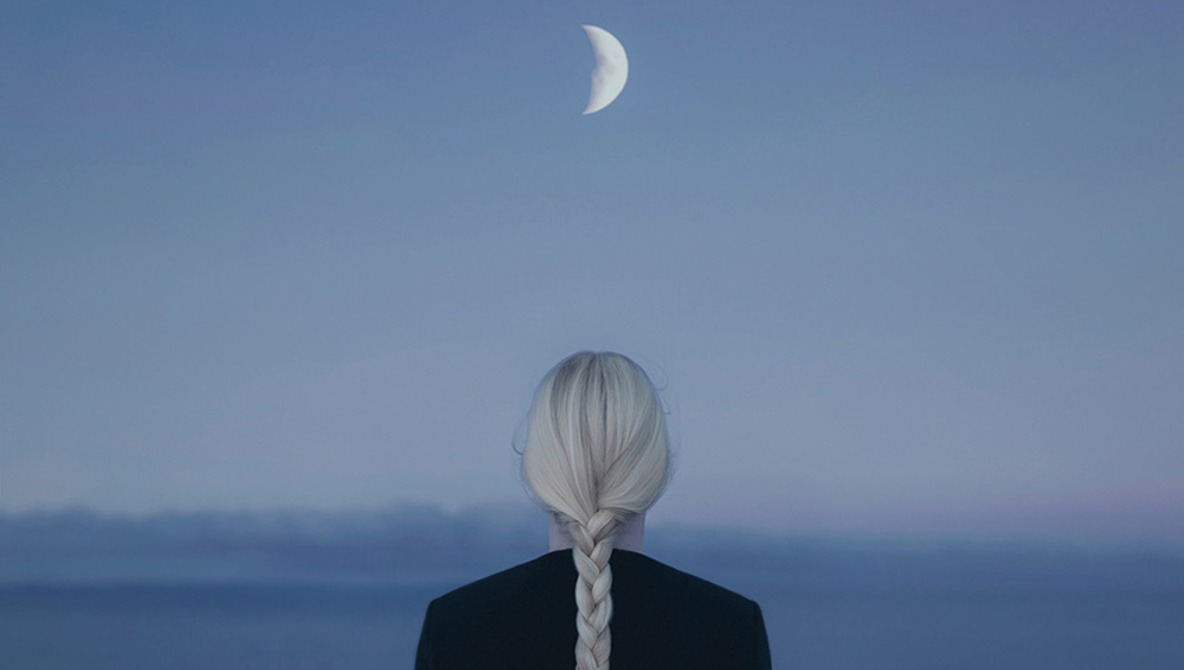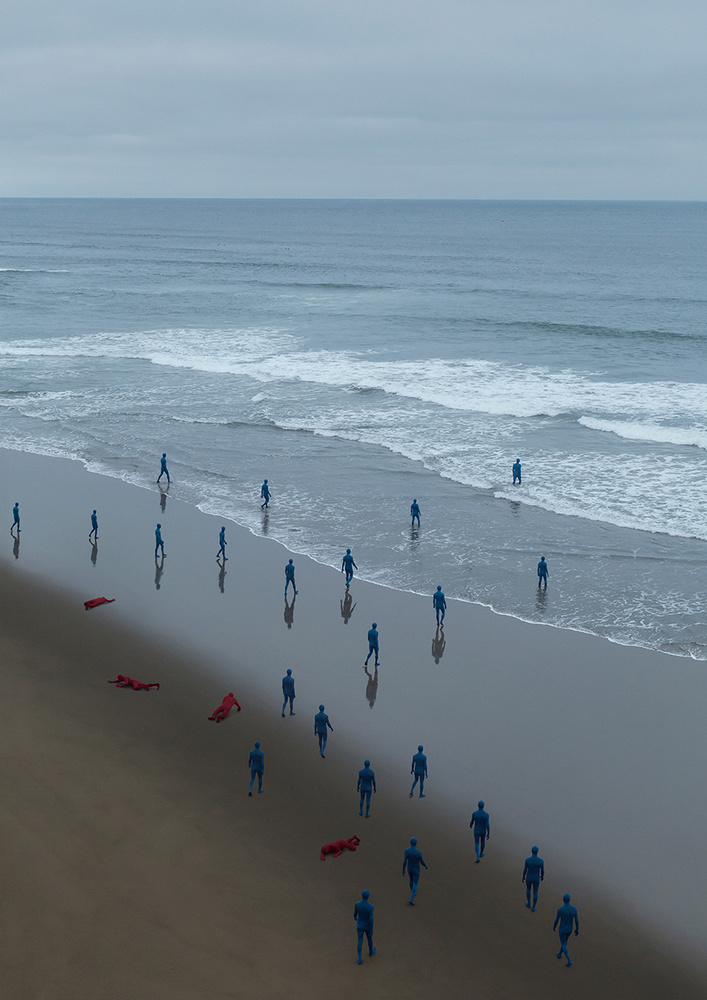Gabriel Isak’s evocative fine art photography is simple and clean in its style, yet it draws the viewer inward, precipitating a contemplative mood with bold surrealist imagery and cool color tones. Fstoppers had the opportunity to interview the artist recently. Delve deeper into his work here.
Beginnings
Photography has been a great therapy to help me process everything in life, and I hope that the images I create can shine light on the darker and lonelier side of the world that we otherwise never talk about.
When Isak first picked up a camera 11 years ago, it was a means to express his state of mind — a state of mind that formed due to an ongoing battle against depression. Then, in 2014, after a seven-year bout of this affliction, he began formal studies of the craft, obtaining a BFA in Photography in 2016. It was during those years that he learned how to use his own experiences to create a style and a voice that was unique to him, thus forging a path to professionalism.
The Art
His photographs are instantly recognizable, not just because of his unique style, but because, as he says, the imagery of Belgian surrealist artist René Magritte and Swedish photographer Julia Hetta have a large influence on him, and it shows, with obscured, mournful, or expressionless faces, centered framing, moons, and skies all being shared visual motifs — however, not necessarily analogous to the other artists in their meaning. He credits other sources of inspiration as being Scandinavian nature, graphic design, dreams, and cinema. But, perhaps some of his most telling inspirations come from two of the greatest thinkers of the 20th century: existentialist philosopher Jean Paul Satre and the father of analytical psychology, Carl Jung. And it is from Jung’s theory of the “Id” or “Shadow” where Isak has taken inspiration for his series “The Shadow And The Self,” a poetic and powerful rumination on the perils of ignoring or suppressing the subconscious. Here, the viewer is granted access to the space in between to view the relationship a conscious but ill mind has with a dark and oppressive subconscious. At least, that’s how this writer interprets it; for, as Isak explains, it is not his intention to tell people what to see, but for the viewer to place themselves within his surreal scenes and extract meaning from the art and experience as it relates to them.
Varied Aesthetic
Apart from his fine art series, Isak also possesses an impressive body of work, which leans toward a more editorial style. We find the color blue, again exercising its calming, contemplative, and melancholic mood in his visual story, “Blue Dimension.” While bold, geometric lines are a repeating aesthetic in a lot of this work, another notable talent of his is his use of color, especially in “Dazed Delusions” and “Illusionary Prisms”.
The Importance of Developing a Personal Style
...listen to the voice inside yourself, it’s a simple saying but it has brought me to where I am today and I’m very grateful for that.
It seems that Isak has quite significantly benefited from his formal education, as is evident by his ability to create such a cohesive body of work. All of his projects are unique, yet they all fit his visual style. What ties everything together is perhaps a focused approach to catharsis. Most artists will create out of an urge to express themselves, and yet, as creative professionals, professional photographers might easily forget or fail to acknowledge why they continually choose a particular color combination or composition. Developing a personal style is the first thing he mentions when asked about what advice he would give to any aspiring creatives. If it helps, gather together images that appeal to you, and analyze them. Is it the lighting or colors etc., that interest you? Do this for a while, and you will be able to build a catalog of imagery from which you can draw for your own work. However, the most important thing to do, Isak says, is to listen to your inner voice.
The System Does Not Matter
Isak has used his life experiences to build a world that is his, using tools he picked up along the way — both figurative and literal. That is what a camera is to him: a means to an end. As he explains, the brand or system is not important to him. All he wants is something that can produce large prints of high quality. For this, he is currently using a Canon 5D Mark III with Canon’s 50mm f/1.4 and 24-70mm f/2.8L.
Planning
Much attention is put into the planning of each shot so that he has full control over his vision. From initial conceptualization, Isak will decide on wardrobe, location, props, model, and equipment, then finishing his idea in the form of a sketch. And, although he endeavors to get as much as possible in-camera, he will always shoot with post-processing in mind. His favorite part of the process, though, is when he can compare his final image to the concept sketch.
The Role of Fine Art Photography Today
I think that fine art photography is more effective and accepted now in the Internet age then it has been before.
Not just concerned with the inner workings of the mind and the subject of depression, Isak contributed his talents to environmental awareness by creating a piece for an exhibition on the topic of climate change, called “Acclimatize,” at the Moderna Museet (Swedish Museum of Modern Art) in Stockholm. As Isak puts it, the power of fine art photography is the freedom of the creator to tell a story. This non-literal method of communicating an idea, in the right hands, can be far more powerful than, for example, reportage or documentary photography. An abstract concept might stay in a person’s mind longer, forcing the viewer to slowly think on the matter. The eureka moment, when the pieces fall into place, is a moment that can be very impactful.
In regards to the future of photography, Isak is wholeheartedly optimistic. The way technology has transformed the industry in the past few years has enabled him to put his vision on paper and in front of people around the world. The prospect of new and novel ways to exhibit is exciting to him, and judging by his work and enthusiasm for the craft, it seems that he will certainly take full advantage.
What Next?
Gabriel Isak has just finished an exhibition in Paris and is currently working on a new series on the topic of existentialism, which he also hope to exhibit when it is finished along with a book release about the project.
All images used with permission from Gabriel Isak.
















Wonderful article. Thanks
Thanks, Loretta!
We need more articles like this one, Thank you Mike!
Absolutely!!!
Thank you, Andre's! I have a few other artists in mind already.
Interesting! Thanks for sharing the photographer's philosophy and his advice to photographers. I am looking forward to reading your future articles about other artists.
Thank you, Mary!
I love it!